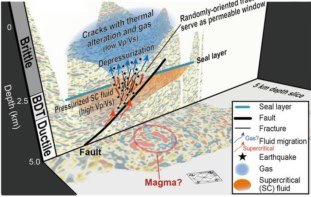Hydrogen fuel cells have been widely touted as an environmentally-friendly alternative to conventional fossil fuels. By oxidising molecular hydrogen, the only direct by-product of their energy generation is water, which means they could significantly reduce pollution and man-made greenhouse gases. But a group of researchers in the US believes that fuel cells could themselves have a detrimental effect on the environment. Tracey Tromp and colleagues at the California Institute of Technology have used models of the atmosphere to show that the inevitable emissions produced by fuel cell technology could substantially damage the ozone layer (T Tromp et al. 2003 Science 300 1740).
A completely efficient system of producing, storing and transporting hydrogen should, in principle, lead to no unwanted emissions of the gas. But the Caltech researchers point out that such a system would be expensive, and that in reality around 10-20% of the hydrogen would escape into the atmosphere. They say that if hydrogen fuel cells replaced all of today’s oil and gas-based combustion technologies, such losses would double or even triple the total hydrogen deposited into the atmosphere at the Earth’s surface.
“More or less dramatic scenarios are equally imaginable, but clearly the potential impact on the hydrogen cycle is great,” say the researchers.
Tromp and colleagues say that the hydrogen would be oxidised when it reaches the stratosphere, which would cool the stratosphere and create more clouds. This would delay the break up of the polar vortex at the north and south poles, making the holes in the ozone layer larger and longer lasting. They estimate that the extra hydrogen will lead to a 5-8% rise in ozone depletion at the north pole and between 3 and 7% at the south pole.
The exact scale of this additional ozone depletion, however, depends on a number of unknown quantities. In addition to uncertainty over the extent of hydrogen emissions in the future, little is understood about how soil absorbs hydrogen from the atmosphere. The researchers say it is conceivable that this process could compensate for all new anthropogenic emissions.



